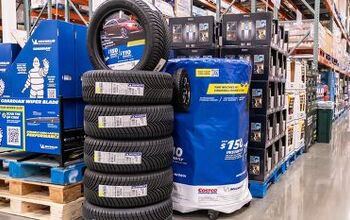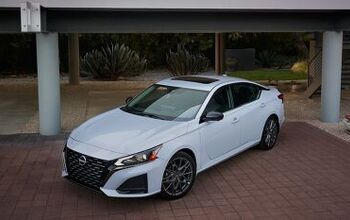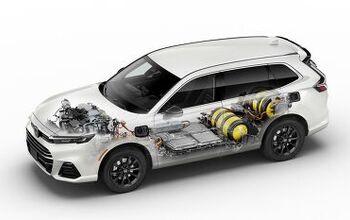Why Does Canada Trump Mexico in Eyes of New U.S. President?
Since the inauguration of U.S. president Donald Trump, Canadian political and auto industry officials have taken every opportunity to highlight the economic prosperity and millions of jobs that depend on cross-border trade. And the lobbying seems to have paid off.
At a joint press conference following the first official meeting Monday between Trump and Canadian Prime Minister Justin Trudeau, the U.S. leader praised the economic ties between the two countries.
“We have a very outstanding relationship with Canada. We’ll be tweaking it,” said Trump. “We’ll be doing certain things that are going to benefit both of our countries.”
At the same time, he took a swipe at the trading relationship with Mexico, calling it “unfair to the United States.”
Mexico, along with Canada and the United States, signed on to the 22-year-old North American Free Trade Agreement, a pact Trump has repeatedly slammed as a “disaster” for American manufacturing and blue collar workers. But he has singled out America’s southern neighbor as the primary culprit for the loss of U.S. manufacturing jobs, threatening to slap a 20-percent tax on Mexican-made goods entering the U.S.
As a way of stemming the outflow of jobs, Trump has pledged to either renegotiate NAFTA to secure more favorable terms, or scrap it altogether.
While Trump indicated Mexico would face drastic changes, Canada appeared to be getting off with a minor reworking of its trade relationship with the United States.
Trump’s conciliatory tone toward Canada makes both economic and political sense, said Flavio Volpe, president of the Automotive Parts Manufacturers’ Association. Canada is the largest U.S. trading partner with one of the smallest trade deficits. In 2016, America’s trade imbalance with its northern neighbor totaled $11 billion compared to $63 billion with Mexico, according to statistics compiled by the U.S. Census Bureau.
“We are for the most part a compliant trading partner,” said Volpe, president of the Automotive Parts Manufacturers’ Association. “We play by the rules, we live and breathe in these regulatory debates on how much closer we can align with U.S. regulatory standards. I think it will be a healthy discussion for us.
“If you look at our trade balance, which seems to be a metric that they focus on, the Canada-U.S. relationship is essentially in balance.”
Canada is the largest consumer of American goods, purchasing $337.8 billion in goods and services in 2015, according to Canadian government statistics. As well, nearly nine million U.S. jobs depend on cross-border trade and investment.
Those jobs are largely located in 35 U.S. states that helped elect Trump who promised to bring back manufacturing jobs from lower-cost countries, like Mexico where auto workers earn about $8 an hour in wages and benefits compared to $47 an hour in the U.S.
Mexico’s steadily growing trade surplus with the U.S. is due, in large part, to its flourishing auto industry that’s revved up since signing on to NAFTA. Mexico has attracted more than $16 billion in investment by automakers since 2010 and nine of 11 North American car assembly plants announced since 2011, according to the Center for Automotive Research, an industry think tank based in Ann Arbor, Mich.
Meanwhile, Canada’s auto industry has been in steady decline, losing two vehicle assembly plants and being overtaken by Mexico in the global vehicle-production rankings.
Trump’s anti-NAFTA message has resonated with blue collar workers, including those belonging to unions that had endorsed Democratic candidate Hillary Clinton.
Shortly after Trump’s victory, Dennis Williams, the president of the United Auto Workers, said he would be willing to work with the new president on revamping NAFTA. “We need to enact trade policies that raise wages and improve working conditions here and abroad,” Williams said.
Mexico has emerged as Trump’s target as its auto industry has prospered under NAFTA, while Canada, like the U.S., has struggled to maintain its manufacturing footprint.
While Trump’s positive view of Canada has allayed fears among Canadian automotive producers, his pledge to review NAFTA keeps them on edge.
“An overhaul is risky because you have an agreement that works, that allows for the delivery of good quality, competitively priced cars to an American consumer,” said Volpe. “But, I think we can all reconcile ourselves with the fact that the lead partner wants to review an agreement that’s 22 years old. I think that’s good business, and we are supportive of a strategic review.”
More by Grace Macaluso
Latest Car Reviews
Read moreLatest Product Reviews
Read moreRecent Comments
- 3-On-The-Tree My 2009 C6 corvette in black looks great when it’s all washed and waxed but after driving down my 1.3 mile long dirt road it’s a dust magnet. I like white because dust doesn’t how up easily. Both my current 2021 Tundra and previous 2014 Ford F-150 3.5L Ecobomb are white
- Bd2 Would be sweet on a Telluride.
- Luke42 When will they release a Gladiator 4xe?I don’t care what color it is, but I do care about being able to plug it in.
- Bd2 As I have posited here numerous times; the Hyundai Pony Coupe of 1974 was the most influential sports and, later on, supercar template. This Toyota is a prime example of Hyundai's primal influence upon the design industry. Just look at the years, 1976 > 1974, so the numbers bear Hyundai out and this Toyota is the copy.
- MaintenanceCosts Two of my four cars currently have tires that have remaining tread life but 2017 date codes. Time for a tire-stravaganza pretty soon.


































Comments
Join the conversation
It comes down to the larger trade imbalance: finished goods in particular. I would be interested in better understanding how the Canadian auto industry evolved and how our northern neighbors were able to attract US auto industrial development. Was it through negotiated trade preference (Mexico), strategic acquisitions (Aussie) or other means? note to the trolls: the greedy, exploitive racist, sexist, religious, linguistic angles has been sufficiently covered, so if you can't comment on technical, commercial, etc elements, please try and stay under your respective bridges for this particular question)
Cleek I would be interested in better understanding how the Canadian auto industry evolved and how our northern neighbors were able to attract US auto industrial development. Was it through negotiated trade preference (Mexico), strategic acquisitions (Aussie) or other means? ----------------------------------------------------------------- When I first started working in the auto business in Canada it was 1967. Ford, G.M., and Chrysler all had plants in Canada, but owned by their USA head office. This was pre NAFTA and the deal was so simple and it worked well. For every vehicle they sold in Canada, they had to build one. Not necessarily the exact model but an equivalent quantity. I have simplified it but that was the premise and was good for Canada and the US owned companies. Then NAFTA happened and I think Canadian production has receded since.